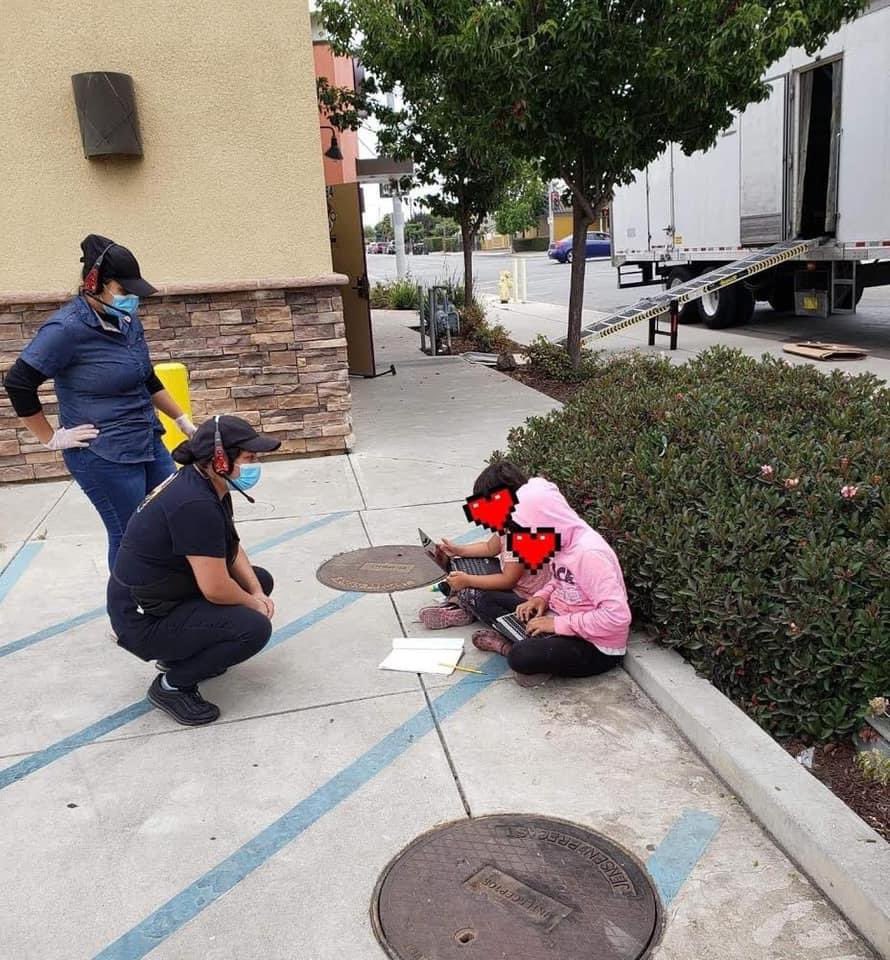Is School Reopening Overrated?
There are many good reasons why we should open schools this fall. Here’s a partial list of reasons to open schools:
- Children (particularly children coming from low-income or otherwise underserved populations) lose access to essential health and social services when not in school.
- Ability to participate in distance learning is stratified by income; school closure will exacerbate existing inequalities.
- Children at home harms parents’ ability to provide – something particularly damaging to single-parent households.
Any article on the topic will lay these out (see, e.g., The Economist). These are mostly ammenities that (public) schools provide, not reasons to return to in-class instruction. It is plausible that the students whose academic achievement is most at risk (i.e., from poor households) are likely those in environments least conducive towards distance learning.

A heartbreaking photo of students distance-learning via Taco Bell’s wifi, source: this Kevin de León tweet.
That said, the benefits of returning to in-class instruction, as laid out in various reports is likely overstated. The CDC, in their document “The Importance of Reopening America’s Schools this Fall,” write,
Social interaction at school among children in grades PK-12 is particularly important for the development of language, communication, social, emotional, and interpersonal skills. […] In an in-person school environment, children more easily learn how to develop and maintain friendships, how to behave in groups, and how to interact and form relationships with people outside of their family.
The Brookings Institute says,
Science tells us that social relationships with friends and teachers are essential for social and academic learning during early childhood.
Sound about right. Some consultants at McKinsey, attempt to quantify the damage of brick-and-mortar school closure. In their report “COVID-19 and student learning in the United States: The hurt could last a lifetime”, they base their estimates of the damage under the assumption that in the no-school-closure counterfactual, the classroom learning environment will mirror that of the classroom pre covid-19.
How does the CDC recommend schools adjust so that they can reopen safely? Here are a few recommendations (from their site):
- Space seating/desks at least 6 feet apart
- Create distance between children on school buses
- Install physical barriers, such as sneeze guards and partitions
- Provide physical guides, such as tape on floors or sidewalks and signs on walls
- Close communal use shared spaces such as dining halls and playgrounds
- As feasible, have children eat meals outdoors or in classrooms […] instead of in a communal dining hall or cafeteria
- If communal dining halls or cafeterias will be used, ensure that children remain at least 6 feet apart in food service lines and at tables while eating
- Alternate the days when cohorts physically attend school
- Stagger student arrival, drop-off, and pick-up time or locations by cohort, or put in place other protocols to limit contact between cohorts
- Pursue virtual activities and events in lieu of field trips, student assemblies, special performances, school-wide parent meetings, and spirit nights, as possible.
One should be immediately skeptical that students will reap the full social benefits of the in-person classroom under these conditions.
Evidence from the peer effects literature suggests that literal water cooler talk is the key driver of social learning. Assuming that “peer effects” will work under these conditions is assigning the peer effects treatment effect to the black box of the classroom, while ignoring the messy mechanics of human interaction within the classroom that drive learning. Some evidence:
- Peer effects in academic achievemnet operate through randomly assigned college roommate (famously, Sacerdote 2001).
- One channel through which knowledge spillovers of academic superstars in the life sciences is physical proximity (Azoulay and Zivin 2005/2012).
- Peer effects in the workplace exist only for workers who interact, and are strongest amongst workers who interact frequently (Mas and Moretti 2009).
- Within building physical proximity correlates with coauthroship in biomedical science at Harvard (Lee et al. 2010)
- At the University of Maryland, the smallest classroom peer effects are estimated for math and science classes, and the largest in humanities and social science classes (Arcidiacono et al. 2012). In which do you interact with your peers more?
- Using a panel of Florida students grades 3-10, and following them over 6 years, Burke and Sass (2013) find that peer effects exist at the classroom level and not the within-school$\times$grade level.
One can continue to dig these up. What these studies point to is that physical proximity and social interaction are the drivers of peer effects; that it’s not something “in the air.”
I am undecided on whether schools should reopen, but based on the literature, I do not expect in-person classroom instruction to yield the same social benefit one would get in a non-pandemic context.